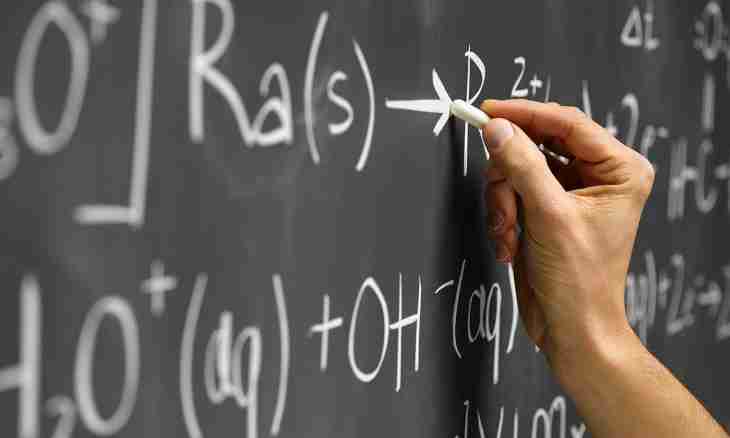The equation is a record of mathematical equality with one or several arguments. The solution of the equation consists in search of unknown values of arguments – roots at which the set equality is true. The equations are algebraic, nonalgebraic, linear, square, cubic, etc. For their decision it is necessary to master the identical transformations, transfers, substitutions and other operations allowing to simplify expression, keeping the set equality.
Instruction
1. The linear equation generally has an appearance: ah + b = 0, and unknown size can be only in the first degree also here, also it should not is in a fraction denominator. However at problem statement often the equation appears, for example, in such look: x +2/4 + x = 3 – 2*kh. In this case before calculation of an argument it is necessary to lead the equation to a general view. A number of transformations is for this purpose carried out.
2. Transfer the second (right) member of equation on other side of equality. At the same time each composed will change the sign: x +2/4 + x - 3 + 2*kh = 0. Carry out addition of arguments and numbers, having simplified expression: 4*kh – 5/2 = 0. Thus, the general form of record of the linear equation is received, from here it is easy to find x: 4*kh = 5/2, x = 5/8.
3. Besides the described operations, at the solution of the equations it is necessary to use the 1 and 2 identical transformations. Their essence is that both members of equation can be put with the same or to increase by the same number or expression. The received equation will look differently, but its roots will remain invariable.
4. The solution of quadratic equations of a look ah² + bx + with = 0 comes down to determination of coefficients and, b, with and their substitutions in the known formulas. Here the same as the rule, for receiving record of a general view it is necessary to carry out previously transformations and simplifications of expressions. So, in the look equation - x² = (the 6th + 8)/2 remove the brackets, transferring the right part for an equal-sign. The following record will turn out: - x² - the 3rd + 4 = 0. Increase both parts of equality by-1 and write down result: x² + the 3rd - 4 = 0.
5. Calculate a discriminant of a quadratic equation on formula D = b² – 4*a*c = 3² – 4*1*(-4) = 25. At a positive discriminant the equation has two roots which formulas of stay are as follows: h1 = - b + √ (D)/2*a; h2 = - b - √ (D)/2*a. Substitute values and calculate: h1 = (-3+5)/2 = 1 and h2 = (-3-5)/2 =-4. If the received discriminant was equal to zero, the equation would have only one root that follows from the given formulas, and at D
6. When finding roots of the cubic equations use Viete-Cardano's method. More difficult equations 4 degrees are calculated by means of replacement as a result of which degree of arguments goes down, and the equations are solved in several stages as square.

